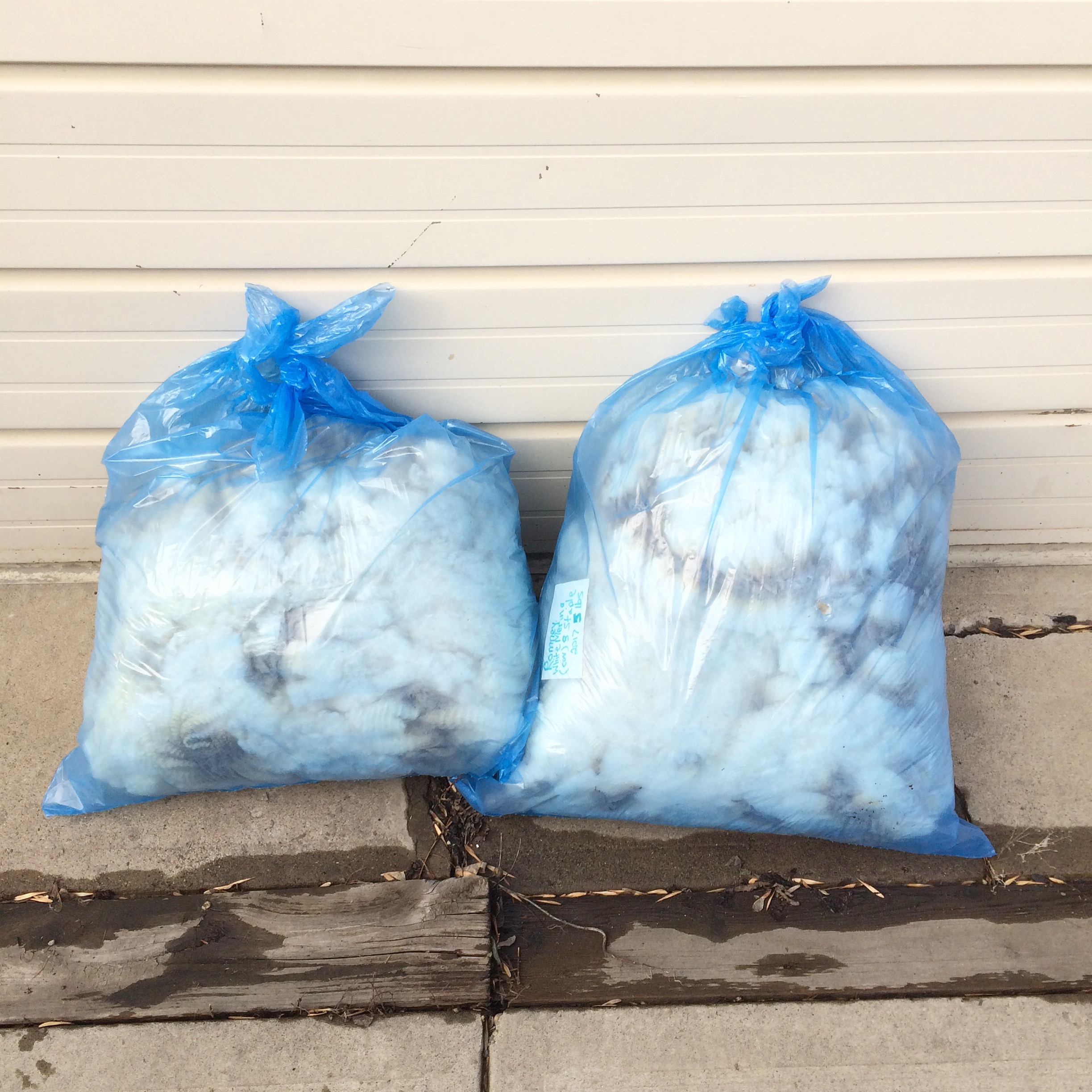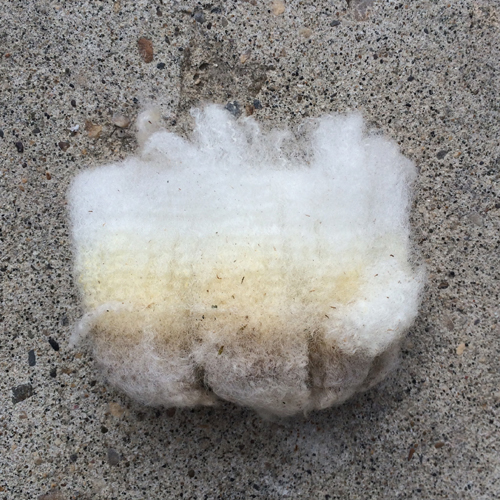I’m nothing if not enthusiastic about something I really love, and I love spinning. Honestly, I can’t give you a good answer why I waited so long to get back into it, and I’m rather lamenting the lost time, but that’s OK. I’m back in it now, and I’ve been spinning fast and furiously, getting myself re-familiarized with the techniques.

But this is really what I want to talk about in this post. A whole lot of fleece.
A few weeks ago I was searching around, looking for some fleece from a local sheep farm. I’m not just interested in the whole spinning process – from prep to finished yarn – I’m also interested in finding local sources for my supplies. I’d to tell you that I’m incredibly high minded, and espouse a bunch of rhetoric about how that’s just better, but the fact of the matter is, I just like finding stuff as local to me as I can. I like being able to meet the folks that run it, I like ensuring the quality that I’m getting, and I like to save shipping costs as much as possible. There’s a whole big discussion to be had about local versus non-local, but maybe not on this blog (it’s a really big discussion, and as things so often are, there’s no simple answer for everything).
But I digress.

Then I happened upon an ad online, advertising wool from a Merino/Romney flock. I was a little worried that they had already sold off all their fleece, but I was in luck! Trickle Creek Farms, about six hours northwest of me, had a selection of Merino/Romney cross and Friesian fleeces still for sale.
And more in luck – they were heading my way soon and offered to meet up with me to grab some fleece from them.

The fleeces are really lovely – very clean (considering they haven’t been cleaned at all), and nice strong staples. The Merino/Romney is about 3″ and the Friesian is about 6″.
It’s still a bit too cold here to start processing outside, so I’m planning on doing a smaller batch of processing (think a few grams of each) just to get a feel for the wool and the process.
Did I mention I have no idea what I’m doing?
I hope to do the washing this week, so hopefully by next Sunday I’ll have a very small batch of washed fleece to show you, and if I’m feeling particularly industrious, maybe a small sample spun up.
Lessons Learned
- Start contacting farmers in later January or early February to get in on the fleece – shearing happens earlier than I thought
- Give every fleece a try – it might surprise you
Helpful This Week
- Wool ‘n Spinning Podcast – an extremely helpful video podcast, and Rachel is awesome at sharing ideas and information
- Yarnometer Control Card from The Electric Carnation – a super handy printable control card for spinning that lists singles, 2-ply and 3-ply widths
As an aside, I plan on listing out these lessons & what has helped me this week at the end of these posts – just as a quick resource for anybody new to this whole process as well.